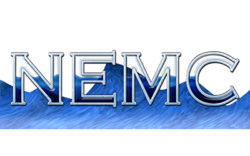No Results Found
The page you requested could not be found. Try refining your search, or use the navigation above to locate the post.
 Brooks Applied Labs’ data was featured prominently in a recent Environmental Toxicology and Chemistry journal article titled, “Selenium and Mercury in Freshwater Fish Muscle Tissues and Otoliths: A Comparative Analysis”. Authors Robin Reash et al. presented a study where they measured mercury (Hg), methylmercury (MeHg), and selenium (Se) in muscle tissue and otoliths from 12 species of fish collected from locations influenced by power plant wastewater. There were interesting differences between Se and Hg in their correlation between concentration in the tissues and otoliths and ecological/exposure factors, perhaps explained by the different manners in which Se and Hg bioaccumulate. For more information, the full abstract can be viewed on-line. Visit the BAL website for more information regarding the vast array of analytical services available for biological tissues
Brooks Applied Labs’ data was featured prominently in a recent Environmental Toxicology and Chemistry journal article titled, “Selenium and Mercury in Freshwater Fish Muscle Tissues and Otoliths: A Comparative Analysis”. Authors Robin Reash et al. presented a study where they measured mercury (Hg), methylmercury (MeHg), and selenium (Se) in muscle tissue and otoliths from 12 species of fish collected from locations influenced by power plant wastewater. There were interesting differences between Se and Hg in their correlation between concentration in the tissues and otoliths and ecological/exposure factors, perhaps explained by the different manners in which Se and Hg bioaccumulate. For more information, the full abstract can be viewed on-line. Visit the BAL website for more information regarding the vast array of analytical services available for biological tissues
 Brooks Applied Labs is happy to announce that Client Services Manager, Lydia Greaves, and her husband, Lionel Greaves IV, welcomed their baby girl, Nyah Marie Greaves, to the world on July 23rd. Big brother, LGV, just adores his new baby sister! Nyah even got to attend her first BAL Summer Picnic last weekend, which she slept through like a champ! We look forward to welcoming Lydia back from her maternity leave in mid-October. Congratulations from all of us at BAL on the new addition to your family!
Brooks Applied Labs is happy to announce that Client Services Manager, Lydia Greaves, and her husband, Lionel Greaves IV, welcomed their baby girl, Nyah Marie Greaves, to the world on July 23rd. Big brother, LGV, just adores his new baby sister! Nyah even got to attend her first BAL Summer Picnic last weekend, which she slept through like a champ! We look forward to welcoming Lydia back from her maternity leave in mid-October. Congratulations from all of us at BAL on the new addition to your family!

Chromium is a naturally occurring metal found in small quantities associated with other metals, particularly iron. It is commonly used for making steel and other alloys, bricks in furnaces, dyes and pigments, chrome plating, leather tanning, and wood preserving. Due to its extensive use in industrial processes, large quantities of chromium compounds are discharged into the environment.
Please contact us to find out more about testing for chromium.
The page you requested could not be found. Try refining your search, or use the navigation above to locate the post.
 A chemical species is the specific form of an element defined as to isotopic composition, electronic or oxidation state, and/or complex or molecular structure. Speciation analysis is the analytical activities of identifying and/or measuring the quantities of one or more individual chemical species in a sample. Chemical speciation analyses have focused primarily on organic molecules (carbon based) historically, for a good reason. Who would want to eat a piece of coal instead of a nutritious apple? But what about the rest of the periodic table beyond carbon? Every element on the periodic table can exist in different molecular forms that have impact on the world around us.
A chemical species is the specific form of an element defined as to isotopic composition, electronic or oxidation state, and/or complex or molecular structure. Speciation analysis is the analytical activities of identifying and/or measuring the quantities of one or more individual chemical species in a sample. Chemical speciation analyses have focused primarily on organic molecules (carbon based) historically, for a good reason. Who would want to eat a piece of coal instead of a nutritious apple? But what about the rest of the periodic table beyond carbon? Every element on the periodic table can exist in different molecular forms that have impact on the world around us.
Understanding the concentration and ratios of different chemical species is important for determining toxicity, mobility, bioavailability, effect on treatment options (both from a medical and industrial perspective), as well as many other characteristics. As a greater understanding emerges around the utility of speciation analyses, the idea of making important decisions with just total metals or elemental data is seen as risky and, in some cases, possibly catastrophic to the success of a project or the health of a population.
An excellent example is if a blood test shows a patient has elevated arsenic levels, then the physician may apply a treatment to get reduce the concentration of this heavy metal. Speciation analysis would have elucidated that the arsenic is in the form of arsenobetaine and the physician could have questioned the patient as to whether or not they consume a lot of fish. If that was the case, the arsenic would be excreted, naturally, from the patient’s body without deleterious effects. One approach, using total elemental analysis shows there may be a problem, while a more focused approach, speciation analysis, identifies the true risk as well as if treatment is required. Imagine if this example is applied to treating groundwater, making pharmaceuticals products better, altering mining practices, or finding out why an industrial process succeeded or failed.
One of the greatest challenges with speciation analyses is that there are very few standardized methods that exist. And, the ones that do exist are mostly based on older technologies and have not kept up with the times. Over the years, Brooks Applied Labs has continued to invest in-house R&D to generate an abundance of new analytical speciation methods spanning much of the periodic table. Bringing advanced analytical technologies to the commercial marketplace requires a deep understanding of the science as well as robust quality systems to ensure maximum defensibility of results.
At Brooks Applied Labs, you will find the most advanced speciation capabilities for the greatest number of metals and elements on the periodic table available in any industry. Visit our speciation page for more details.
 Brooks Applied Labs’ VP of Operations, Annie Carter, will be very active at next month’s National Environmental Monitoring Conference (NEMC), held August 5-9 in Jacksonville, FL. First, Annie will be presenting in the “Best Practices for Managing Environmental Laboratories” session on the topic of applying Amazon’s leadership principals to the management of an analytical laboratory (view abstract here). Later in the week, Annie will be chairing a session on “Metals Analysis and Remediation”. Feel free to contact Annie if you’d like to connect with her at the conference or request a copy of her presentation.
Brooks Applied Labs’ VP of Operations, Annie Carter, will be very active at next month’s National Environmental Monitoring Conference (NEMC), held August 5-9 in Jacksonville, FL. First, Annie will be presenting in the “Best Practices for Managing Environmental Laboratories” session on the topic of applying Amazon’s leadership principals to the management of an analytical laboratory (view abstract here). Later in the week, Annie will be chairing a session on “Metals Analysis and Remediation”. Feel free to contact Annie if you’d like to connect with her at the conference or request a copy of her presentation.  BAL analyzes samples from all over the world on a regular basis. Shipping samples across borders from a foreign country to the US is not uncommon, but there are special regulations and recommended best practices to review prior to shipping samples. Before shipping samples to BAL from outside of the US, always contact your BAL Project Manager to discuss the shipment well ahead of time! If you don’t know who your BAL Project Manager is contact us and we’ll get you in touch with the right person. Information specific to different types of international shipments can be found below.
BAL analyzes samples from all over the world on a regular basis. Shipping samples across borders from a foreign country to the US is not uncommon, but there are special regulations and recommended best practices to review prior to shipping samples. Before shipping samples to BAL from outside of the US, always contact your BAL Project Manager to discuss the shipment well ahead of time! If you don’t know who your BAL Project Manager is contact us and we’ll get you in touch with the right person. Information specific to different types of international shipments can be found below.
The following instructions are for clients shipping tissue samples via FedEx to Brooks Applied Labs. If another shipper is used, these instructions may need to be changed.
The following instructions are for clients shipping soils collected outside of the U.S. to BAL. Your Project Manager will ensure that you receive all of the necessary documentation to include with your shipment either by including it with your bottle order or by emailing you electronic copies. When preparing your shipment to BAL please be sure to always:
Following the above steps will help ensure that your samples do not get held up at inspection.
Migratory Birds – Special permit applies. You must contact BAL prior to shipping.
Hazardous Materials – Special labeling requirements apply. You must contact BAL prior to shipping.
 Earlier this month, on June 13th, Brooks Applied Labs scientists were presenting at a meeting of the North American Metals Council (NAMC) Selenium Working Group in Calgary. Ben Wozniak (Technical Services Specialist) gave a talk on the Formation and Identification of Methaneselenonic Acid in a Water Treatment Process, while Russ Gerads (Business Development Director) presented on the Application of Solid Phase Speciation Analyses for Selenium Management. Contact us if you would like to know more about either of these topics.
Earlier this month, on June 13th, Brooks Applied Labs scientists were presenting at a meeting of the North American Metals Council (NAMC) Selenium Working Group in Calgary. Ben Wozniak (Technical Services Specialist) gave a talk on the Formation and Identification of Methaneselenonic Acid in a Water Treatment Process, while Russ Gerads (Business Development Director) presented on the Application of Solid Phase Speciation Analyses for Selenium Management. Contact us if you would like to know more about either of these topics.
Coming up, July 16th – 18th, Michelle Briscoe (President/CEO) will be heading to Denver to attend the US Department of Energy’s Analytical Services Program (DOE ASP) Workshop. This workshop offers new programmatic changes, best management practices, and lessons learned by DOE employees and the labs that provide the analytical services at many of the DOE sites. Michelle will be participating in a panel discussion to provide feedback to the DOE on the new accreditation program from the laboratory’s perspective.
 There have been many research publications in recent years detailing the heavy metal levels in alcoholic beverages such as beer and wine, but few of these investigate how the processing of these beverages may influence the levels of toxic metals. The results of a new study by Redan et. al. published in the Journal of Agricultural and Food Chemistry (February 2019) show a clear correlation between the filtration of beer and wine using diatomaceous-earth (DE) filter media and the concentration of inorganic arsenic and lead in the beverage. However, these elevated concentrations can be mitigated through careful selection of DE media or pre-rinsing of the filter aids. Brooks Applied Labs offers a full range of analytical testing services for heavy metals and inorganic arsenic speciation in beverages of all types.
There have been many research publications in recent years detailing the heavy metal levels in alcoholic beverages such as beer and wine, but few of these investigate how the processing of these beverages may influence the levels of toxic metals. The results of a new study by Redan et. al. published in the Journal of Agricultural and Food Chemistry (February 2019) show a clear correlation between the filtration of beer and wine using diatomaceous-earth (DE) filter media and the concentration of inorganic arsenic and lead in the beverage. However, these elevated concentrations can be mitigated through careful selection of DE media or pre-rinsing of the filter aids. Brooks Applied Labs offers a full range of analytical testing services for heavy metals and inorganic arsenic speciation in beverages of all types.  On June 12th and 13th, BAL’s Russ Gerads and Ben Wozniak will be attending the North American Metals Council (NAMC) meeting in Calgary, Alberta in support of the Selenium Working Group. Our involvement in this focused workgroup is a testament to BAL’s expertise and experience in metals chemistry and the value it provides to industry. Also, earlier this month, Jamie Fox presented at the DoD Environmental Monitoring & Data Quality (EMDQ) Workshop on “An Overview of Sequential Extraction Methods to assess Bioavailability and Mobility of Metals in Sediments.” If you would like a copy of the presentation, please contact us. After EMDQ, Jamie made a stop in Austin, Texas for the TCEQ Environmental Trade Fair and Conference to talk with attendees about how their projects would benefit from our specialty metals services. If you missed him there or would like to hear more, let us know.
On June 12th and 13th, BAL’s Russ Gerads and Ben Wozniak will be attending the North American Metals Council (NAMC) meeting in Calgary, Alberta in support of the Selenium Working Group. Our involvement in this focused workgroup is a testament to BAL’s expertise and experience in metals chemistry and the value it provides to industry. Also, earlier this month, Jamie Fox presented at the DoD Environmental Monitoring & Data Quality (EMDQ) Workshop on “An Overview of Sequential Extraction Methods to assess Bioavailability and Mobility of Metals in Sediments.” If you would like a copy of the presentation, please contact us. After EMDQ, Jamie made a stop in Austin, Texas for the TCEQ Environmental Trade Fair and Conference to talk with attendees about how their projects would benefit from our specialty metals services. If you missed him there or would like to hear more, let us know.
 Dr. Hakan Gürleyük, Brooks Applied Labs’ Technical Director and Sr. Scientist, was recently a Chemistry Seminar Series guest lecturer at the University of Washington – Bothell’s School of STEM. On March 13th Hakan led a class of approximately 45 undergraduate chemistry students as they learned about “Speciation Analysis Using ICP-MS”. Visit our website if you would also like to learn more about trace metals speciation, or to receive a copy of the slide deck from this presentation, please contact us.
Dr. Hakan Gürleyük, Brooks Applied Labs’ Technical Director and Sr. Scientist, was recently a Chemistry Seminar Series guest lecturer at the University of Washington – Bothell’s School of STEM. On March 13th Hakan led a class of approximately 45 undergraduate chemistry students as they learned about “Speciation Analysis Using ICP-MS”. Visit our website if you would also like to learn more about trace metals speciation, or to receive a copy of the slide deck from this presentation, please contact us.